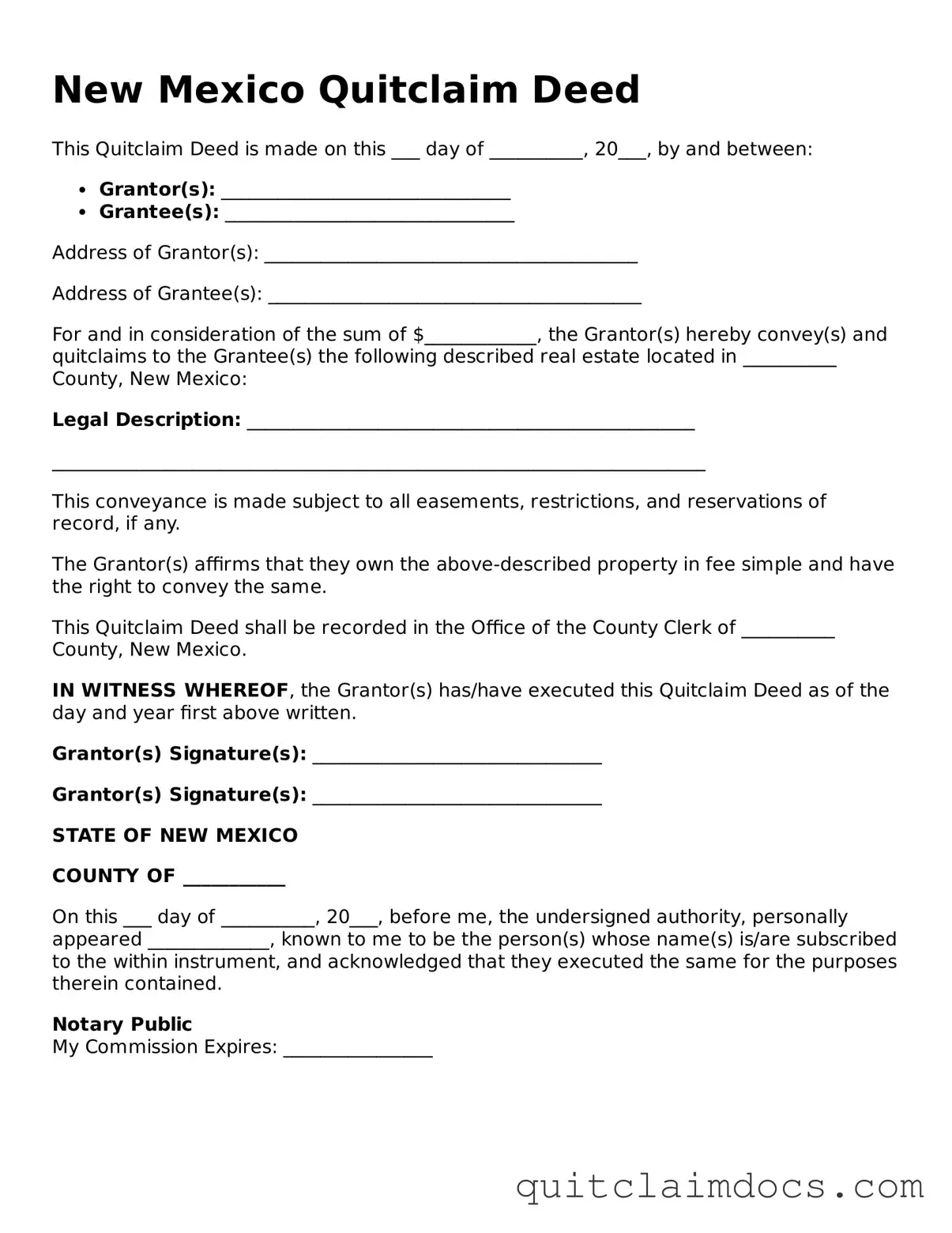New Mexico Quitclaim Deed
This Quitclaim Deed is made on this ___ day of __________, 20___, by and between:
- Grantor(s): _______________________________
- Grantee(s): _______________________________
Address of Grantor(s): ________________________________________
Address of Grantee(s): ________________________________________
For and in consideration of the sum of $____________, the Grantor(s) hereby convey(s) and quitclaims to the Grantee(s) the following described real estate located in __________ County, New Mexico:
Legal Description: ________________________________________________
______________________________________________________________________
This conveyance is made subject to all easements, restrictions, and reservations of record, if any.
The Grantor(s) affirms that they own the above-described property in fee simple and have the right to convey the same.
This Quitclaim Deed shall be recorded in the Office of the County Clerk of __________ County, New Mexico.
IN WITNESS WHEREOF, the Grantor(s) has/have executed this Quitclaim Deed as of the day and year first above written.
Grantor(s) Signature(s): _______________________________
Grantor(s) Signature(s): _______________________________
STATE OF NEW MEXICO
COUNTY OF ___________
On this ___ day of __________, 20___, before me, the undersigned authority, personally appeared _____________, known to me to be the person(s) whose name(s) is/are subscribed to the within instrument, and acknowledged that they executed the same for the purposes therein contained.
Notary Public
My Commission Expires: ________________
